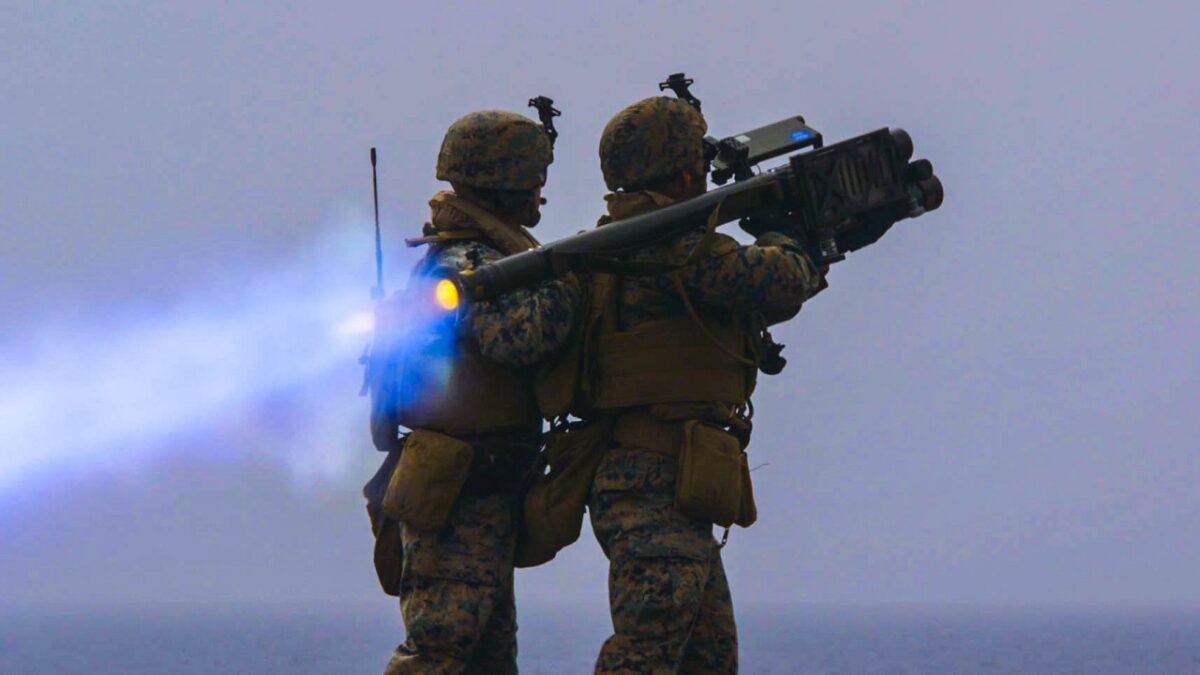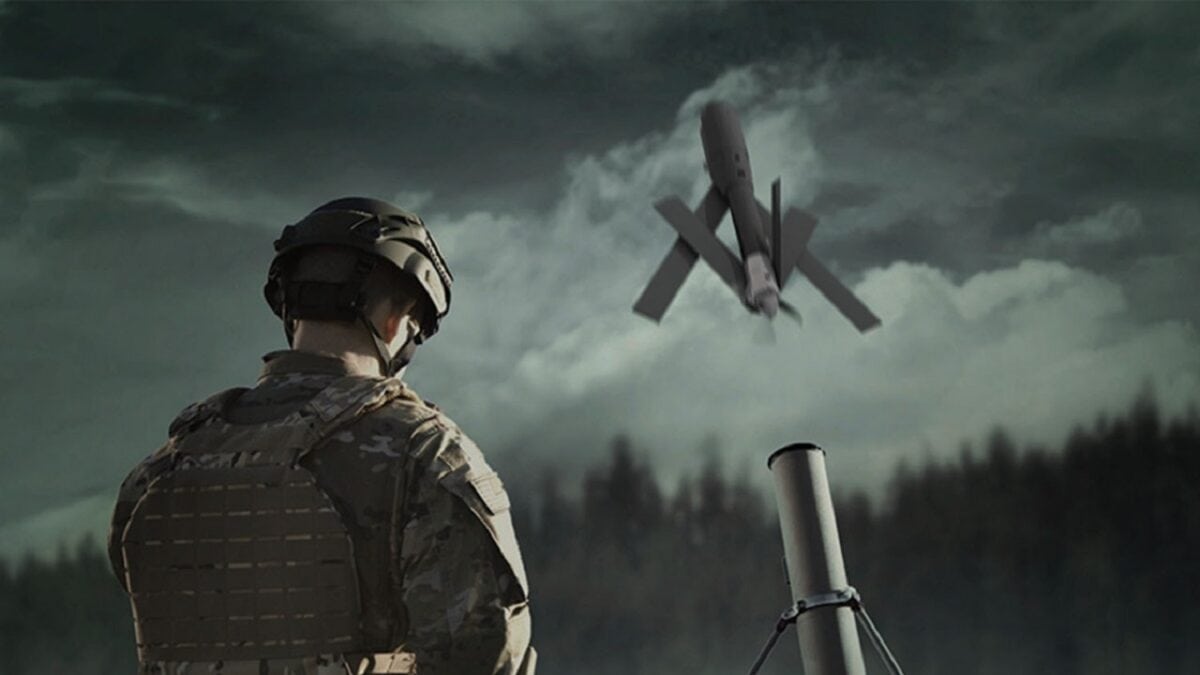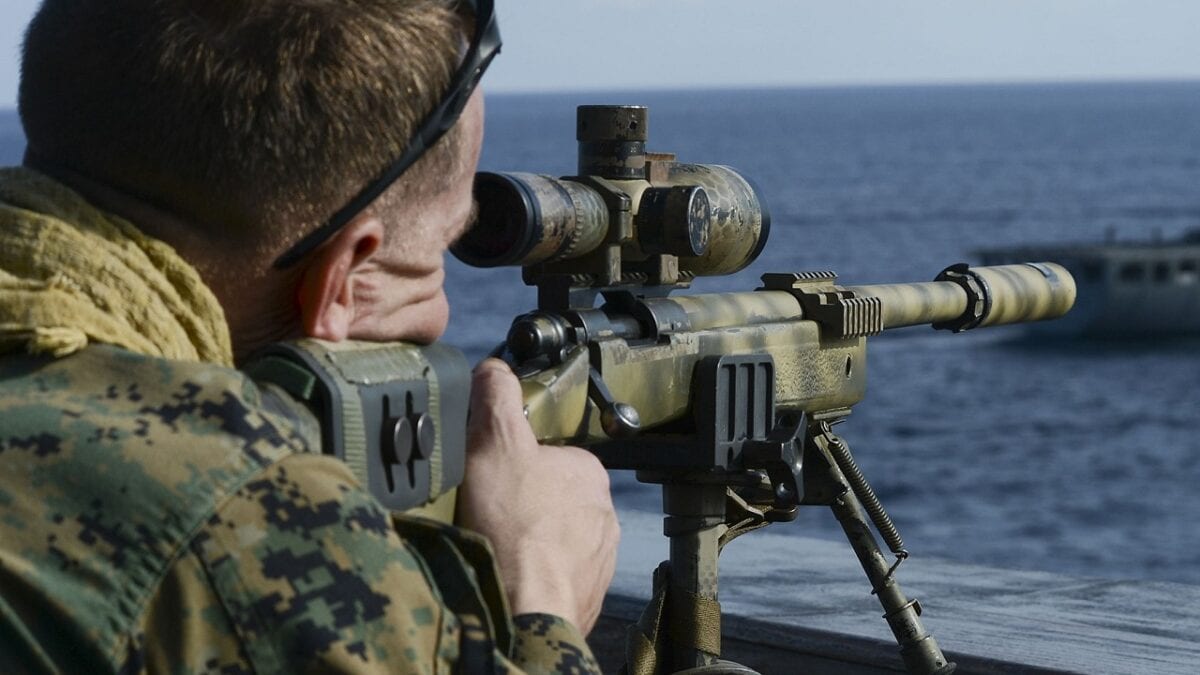The U.S. has sent a mini-arsenal worth billions of dollars to Ukraine over the last few months. Here is a listing of everything that has been sent: As Russia continues to ravage Ukraine, the United States has upped their military aid, sending thousands of weapons to the war-torn country. The Pentagon has already pledged more than $4 billion in security assistance to Ukraine with a focus on heavy artillery since Russia began a focused attack on the eastern part of the country.
President Joe Biden unveiled a massive new aid package in late April, that includes $20.4 billion in military and security aid to Ukraine and strengthening NATO allies. It builds on an earlier offering in April that included $800 million worth of weapons and supplies. Biden has said the US has the capacity to send Ukraine aid “for a long time,” but added that he will have to ask Congress to authorize more funds, as the sanctioned current stockpile is almost depleted.
“Putin is banking on us losing interest,” Biden said, according to the AP, adding that the Russian president believes “Western unity will crack… and once again we’re going to prove him wrong.”
The new aid package, which includes humanitarian and economic aid at a total cost of $33 billion, mentions additional artillery, armored vehicles and advanced air defense systems, but doesn’t give specify which military systems in a possible move to keep Russia from anticipating and countering them.
Here is a list of all the weapons the US has approved to send to Ukraine so far:
1. Over 1,400 Stinger anti-aircraft missiles
The Stinger anti-aircraft system, also known as surface-to-air missile or ground-to-air missile, is a portable shoulder-fired missile system that can down destroy aircraft and other missiles. Raytheon Technologies, the company that produces Stingers, is struggling to replace the weapons given to Ukraine, as the Department of Defense hasn’t hasn’t bought new ones in 18 years, and so many of the parts are not commercially available, Breaking Defense reported. This means that Raytheon will have to redesign some of the electronics involved in Stinger production.

MEDITERRANEAN SEA (March 23, 2018) U.S. Marines with Marine Air Control Group (MACG) 28 Low Altitude Air Defense (LAAD) Detachment, Marine Medium Tiltrotor Squadron (VMM) 162 (Reinforced), 26th Marine Expeditionary Unit (MEU), fire a Stinger trainer missile at a Marine Corps AV-8B Harrier during a Stinger Trainer Launch Simulator (STLS) shoot aboard the amphibious assault ship USS Iwo Jima (LHD 7) in the Mediterranean Sea, March 23, 2018. Iwo Jima and the 26th MEU are conducting naval operations in the U.S. 6th Fleet area of operations. (U.S. Marine Corps photo by Sgt. Sylvia L. Tapia/Released)

NATO Stinger missile. Image Credit: Creative Commons.
2. Over 5,500 Javelin anti-tank missiles
The Javelin is an advanced anti-tank weapon that can be carried and launched by a single person. Like the track-and-field spear that shares its name, the Javelin strikes from the top, where a tank’s armor is lightest. The self-guided weapon has a range of two and a half miles and tracks its target’s thermal picture. The US-made Javelins have proven to be very successful against Russian tanks during the ongoing war.

Javelin anti-tank missile being fired along with a mortar. Image credit: UK government.

A Marine with Weapons Company, 1st Battalion, 4th Marine Regiment, fires an FGM-148 Javelin during a TOW battle drill aboard Camp Pendleton, Calif., Aug. 28-29, 2014. The Marines were performing basic TOW drills using live fire and maneuver to ensure they were ready for future deployments.
3. Over 14,000 other anti-armor systems
Anti-armor systems refer to the full range of weapons that target armored vehicles. The US government has declined to name certain systems being sent to Ukraine so that Russia cannot anticipate and counter their effects.
4. Over 700 Switchblade drones
Switchblades, sometimes described as “kamikaze drones,” are self-piloted drones filled with explosives. They are portable and come in two sizes, 300 and 600, with the former weighing around five and a half pounds and able to fit in a backpack, while the latter’s missile alone weighs 33 pounds and is powerful enough to destroy a tank. Because it is both an armed weapon and a flying scout, the switchblade is classified as a “loitering munition.” The weapon is named for switchblade knives because of the way its spring-loaded wings open during launch. First unveiled in 2011, one expert told Insider Switchblades could “revolutionize land warfare.”

Switchblade drone. Image Credit: Industry handout.

Switchblade drone. Image Credit: Industry handout.
5. 90 155mm Howitzers and 183,000 155mm artillery rounds
The Howitzer, essentially a cannon, has the longest range of the military’s indirect-fire guns. It can fire up to four rounds per minute and can hit targets up to 18 miles away. These pieces of heavy artillery, which weigh nearly 16,000 pounds, will be vital to Ukraine during this new phase of war in the Donbas region, which has flat terrain and rolling plains. The first Howitzers of the Pentagon’s latest aid package arrived in Ukraine in late April, and American troops are teaching Ukrainian troops how to use them in an undisclosed part of Europe.

155mm Howitzer. Image Credit: Creative Commons.
6. 72 Tactical Vehicles to tow 155mm Howitzers
These tactical vehicles will be used to tow Howitzers, which weigh slightly less than 16,000 pounds.
7. 16 Mi-17 helicopters
Mi-17 helicopters are utility transport vehicles used to move troops from place to place. Along with transporting personnel, Mi-17s can be armed with cannons and rockets. These helicopters were actually purchased from a Russian state-owned arms exporter in the early 2010s, intended for the Afghan government, the Washington Post reported. At the time, US lawmakers were angered by the purchase, insisting the Pentagon choose an American manufacturer. But the US chose the Russian helicopters because they were relatively inexpensive and Afghan pilots knew how to fly them.

Mi-17. Image Credit: Creative Commons.
8. Hundreds of Armored High Mobility Multipurpose Wheeled Vehicles
Armored High Mobility Multipurpose Wheeled Vehicles (HMMWVs), known colloquially as Humvees, are lightweight diesel-powered vehicles used by 50 countries’ militaries.
9. 200 M113 Armored Personnel Carriers
Armored Personnel Carriers, also known as “battlefield taxis,” are designed to transport troops and equipment in combat zones. While they may be able to protect from some shell fragments, these vehicles cannot take direct hits from anti-tank weapons. There are 40 versions of the M113 APC, and they have been in use since the Vietnam war.

M113. Image Credit: Creative Commons.
10. Over 7,000 small arms
True to their name, small arms are infantry weapons an individual soldier can carry, including pistols, rifles, and shotguns, among others.

M40 Sniper Rifle. Image Credit: Creative Commons.

U.S Army Sgt. Matthew Fiore, a UH-60 Black Hawk crew chief representing the Marietta-based 78th Aviation Troop Command, Georgia National Guard, engages targets with the M2010 Enhanced Sniper Rifle at the sniper event during the 2022 Georgia National Guard Best Warrior Competition at Fort Stewart, Ga., March 21, 2022. The Best Warrior Competition tests the readiness and adaptiveness of our forces, preparing our Georgia Guardsmen to meet today’s unpredictable challenges. (U.S. Army photo by Sgt. 1st Class R.J. Lannom Jr.)
11. Over 50 million rounds of ammunition
On Monday, the US State Department used an emergency declaration to approve $165 million worth of ammunition to Ukraine, the AP reported. This is the first time an emergency declaration has been used in the Biden administration, with the last declaration taking place during the Trump administration in 2019 when the former president attempted to sell weapons to Saudi Arabia and the United Arab Emirates. The State Department said “critically low stores of ammunition for [the Ukrainians] fielded systems” were some of the reasons for the state of emergency, according to the AP.

Image of gun ammo. Image Credit: Creative Commons.
12. 121 Phoenix Ghost tactical drones
The Phoenix Ghost is a new tactical drone that has not been used before. According to a senior defense official, the weapon was “rapidly developed by the Air Force in response, specifically, to Ukrainian requirements,” Breaking Defense reported. However Pentagon Press Secretary John Kirby later denied the statement, saying it was developed before the war broke out. Kirby declined to comment on the specific capabilities of the Phoenix Ghost, but said it was “akin” to the Switchblade, a single-use kamikaze drone.
13. Laser-guided rocket systems
Laser-guided rocket systems are traditionally mounted on aircraft, but can also be launched from ground-based stations or mounted on other vehicles. One system, known as the Advanced Precision Kill Weapons System, turns rockets into precision-guided munitions.
14. Puma Unmanned Aerial Systems
The Puma Unmanned Aerial System is a drone that provides intelligence, surveillance, target acquisition, and reconnaissance, produced by US defense contractor AeroVironment. The drone can last for 150 minutes in the air, has a wingspan of 9.2 feet, and can fly up to 37.2 miles.

Puma Drone. Image Credit: AeroVironment.
15. Unmanned Coastal Defense Vessels
Unmanned Coastal Defense Vessels, sometimes referred to as “drone boats,” are ships that operate on the water without a crew. They could be used to intercept or rebuff other vessels, and Ukraine will likely be able to use them to defend against Russian amphibious assaults or attempts to operate near Ukraine.
16. M18A1 Claymore anti-personnel munitions
The M18A1 Claymore is a mine usually used against personnel, but can also be used against unarmored vehicles. Unlike traditional landmines, the Claymore is detonated by remote control and fires out steel balls.
17. C-4 explosives and demolition equipment for obstacle clearing
C-4s are plastic explosives used for demolition and metal cutting. They can create a targeted explosion and be used underwater.
Julie Coleman is a fellow on the Military/Defense team at Insider. She’s previously worked at The Philadelphia Inquirer, The New York Post, NY1, Forbes Magazine, and trade publication Financial Planning through the Dow Jones News Fund.

